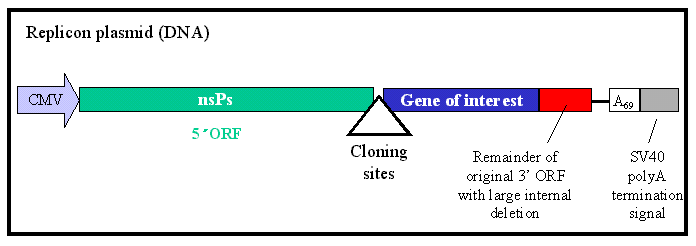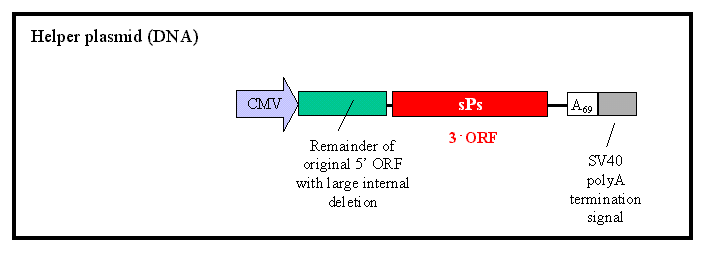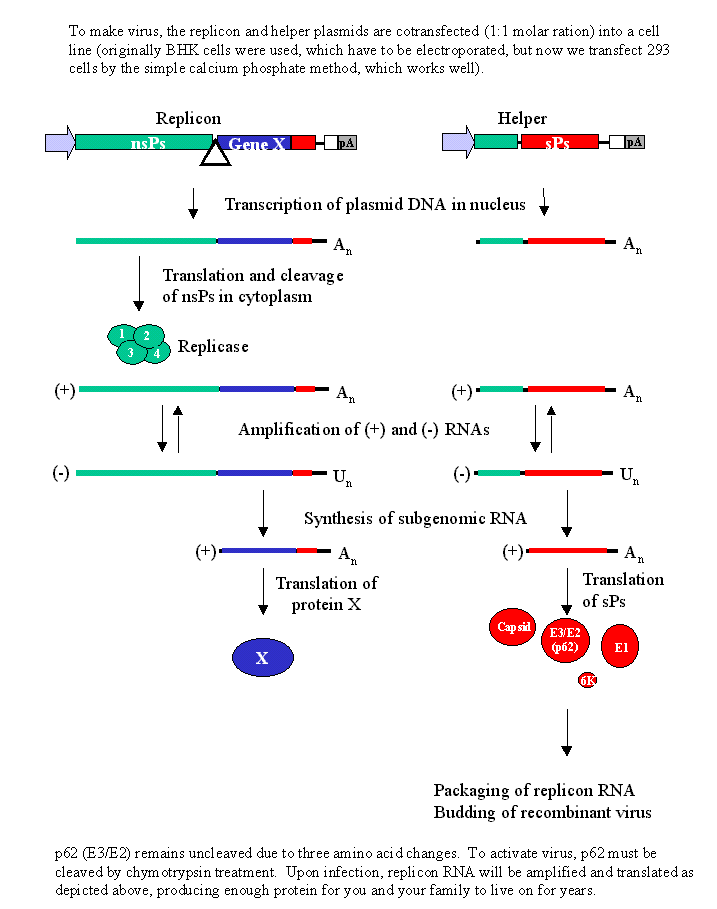| |
Here is a quick overview of the recombinant SFV vector system. For a detailed protocol, click here.
Before reading this, you may want to check out the normal SFV life cycle
As a reminder, here is the wild type genome:

- In the expression system, the two ORFs (for replicase and packaging proteins) are in separate plasmids.
- The 5<92> ORF, which encodes the nsPs (replicase), is in the "replicon " plasmid. Cloning sites are placed downstream of the 5<92> ORF, into which the gene of interest is cloned. The 3<92> ORF is mostly deleted.
- We have several versions of the replicon (pSCA, pSMART1, pSMART2a, pSMART 2b), which are described in detail .
Picture of replicon

- The 3<92> ORF, which encodes the sPs (packaging), is in the "helper" plasmid.
- Our plasmid is called pSCAhelper. Full sequence of pSCAhelper.
Picture of helper

In both replicon and helper vectors, expression is driven by the CMV immediate early promoter (from the Invitrogen vector pcDNA1/Neo). At the end of the replicon and helper expression cassettes, there is a polyA stretch derived from the original virus genome, and we have also inserted the SV40 polyA termination signal to ensure proper processing of message.
Picture of recombinant system

For infection, we use BHKs or mouse embryo fibroblasts, but you can use any line you want. There are some differences in protein production and efficiency of infection between lines. We recommend you try a few lines in your lab to see which works best.
Note that during generation of recombinant virus, the transfected plasmid does synthesize your protein of interest. If you want, you can harvest it at this stage (in which case, you don<92>t even have to co-transfect the helper). But remember that only transfected cells will produce protein. You<92>ll get much more protein by harvesting virus and infecting several plates.
Once again, the virus you produce is conditionally infectious. It is modified so that you have to cleave the E2-E3 proteins using chymotrypsin. This is a safety feature. Even if a complete virus genome, containing both replicon and helper ORFs, is generated by recombination (or if replicon and helper RNAs are co-packaged), the resulting virus will only be able to infect cells once. Further infection would require activation by chymotrypsin.
For a detailed protocol go here
For details on the replicon and helper vectors go here.
|
|









